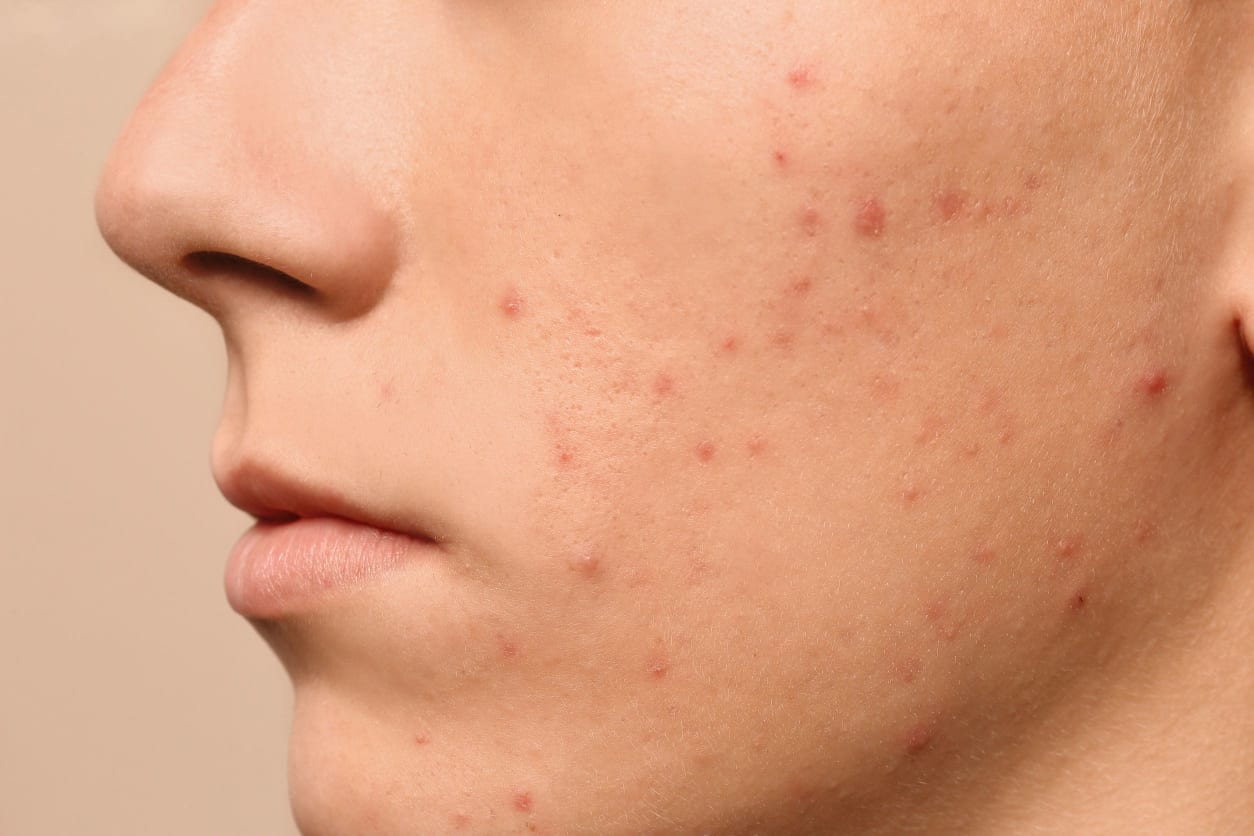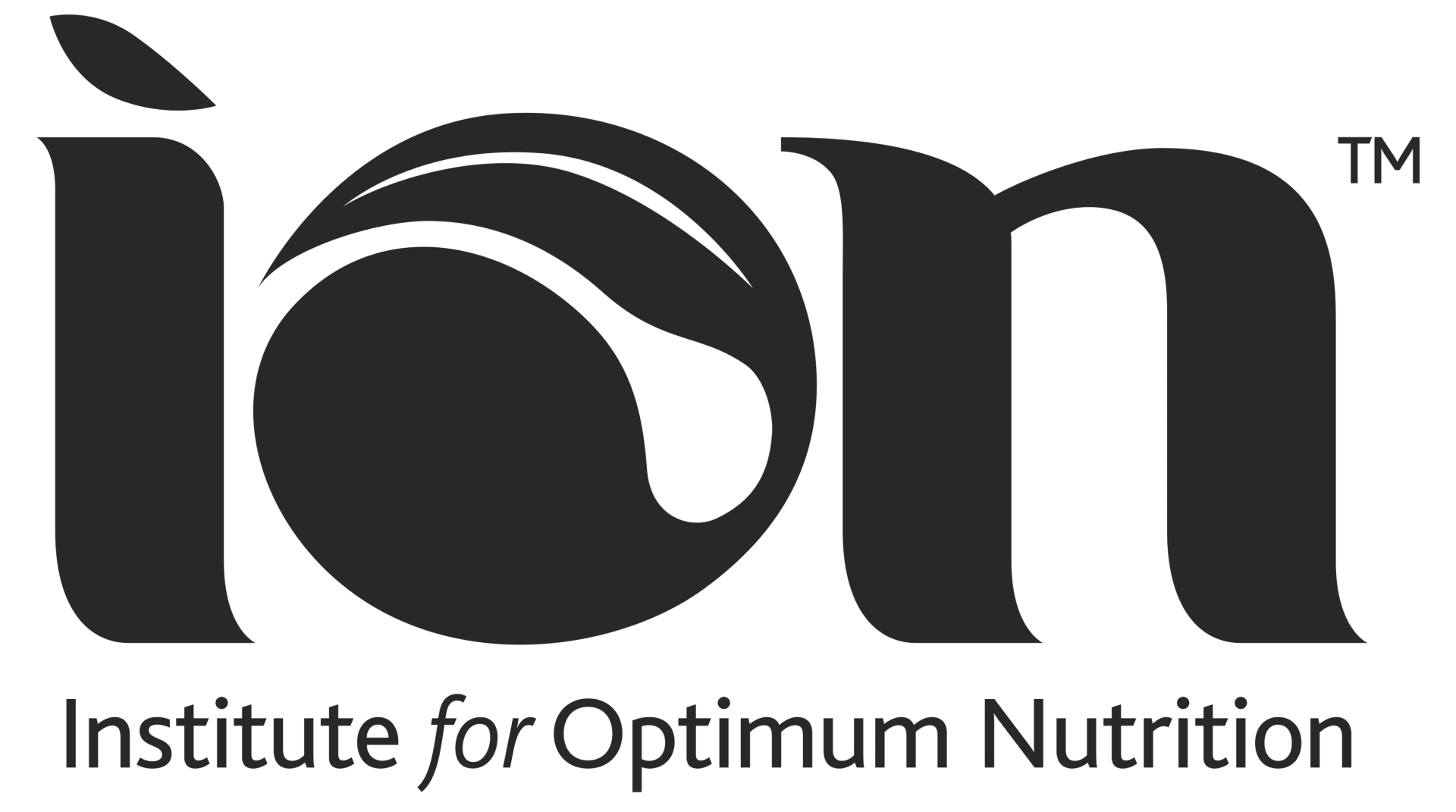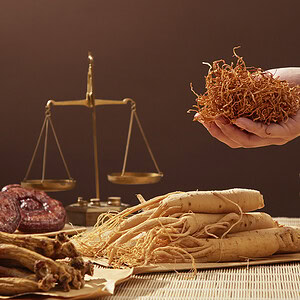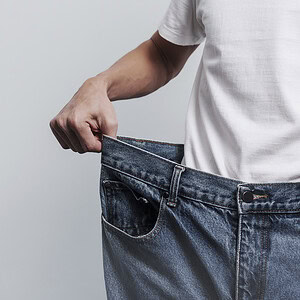Acne symptoms can be eased with nutrition and lifestyle – nutritional therapist Catherine Jeans explains how.
Most of us get spots as teenagers, but acne can happen to anyone at any age.
On the face, chest and back, it can take many different forms:
- white heads
- black heads
- pustules
- red bumps
- painful large cysts under the skin
It can be tender to touch and can lead to scarring, especially if spots are squeezed too forcefully.
Mentally, acne can also be debilitating. Research has linked it to depression, social anxiety, insomnia, stress, and even suicidal thoughts.
Louise Thomas-Minns, a skin care educator and product formulator, knows all too well the mental health consequences of acne: “I suffered with acne myself, which is one of the reasons I do what I do.
“It can affect your self-confidence as a whole, and you often start to question your ability in many areas of your life.”
How to treat acne
Because acne can lead to scarring, it’s important to discuss it with your GP.
Treatments include antibiotics, retinoids, and the contraceptive pill to help balance hormones.
But the risk of antibiotic resistance and high recurrence rates after retinoid treatment has led to research in other areas of support, including diet, microbiome balance, and specific nutrients.
What causes spots?
Acne is most common during periods of hormone fluctuation, which is why outbreaks occur during puberty or for a few days during each menstrual cycle.
Another trigger is perimenopause, when women who may never have experienced spots suddenly develop them in their forties.
The main culprit driving this is a group of hormones called androgens, which includes testosterone.
These can over-stimulate microscopic glands (called sebaceous glands) in the skin, causing them to over-produce an oily substance called sebum.
Along with dead skin cells, bacteria and other debris, this excess sebum blocks the skin pores, resulting in spots, inflammation and localised bacterial infection, which can lead to the pus inside spots.
Gurjit Dhanjal, a registered nutritional therapy practitioner and skin specialist, explains it’s the balance of androgens that’s important: “So during menopause, for example, as oestrogen levels fall, androgens become more dominant. And this is what drives the oil gland activity.”
Even more exciting is the discovery of communication between the gut and the skin microbiomes, known as the gut-skin axis.
How sugar affects acne
We’ve probably all heard at some point that sugar can give us spots, but it may not have been clear why.
Foods such as white bread, juices, biscuits, sweets and pastries, which release sugar quickly, can cause high blood sugars, which then trigger high levels of the hormone insulin. This, in turn, can raise testosterone.
Dhanjal recommends replacing these types of foods with slow-release wholefoods:
- vegetables
- wholegrains (e.g. oats and brown rice)
- quinoa
- pulses
- nuts and seeds
Protein with every meal, (e.g. fish, eggs, meat, tofu or lentils) and reducing caffeine can also help to support blood sugar balance.
Dietary fibre can also be beneficial by binding excess androgens.
For the perimenopause, phytoestrogen foods such as tofu, flaxseeds and lentils can also exert a gentle oestrogenic effect, helping to balance hormones.
Does dairy cause acne?
In bad news for cheese lovers, research suggests dairy consumption might also trigger acne, because of a hormone called insulin-like growth factor (IGF-1).
In the same way as insulin, IGF-1 can increase levels of androgens.
Skimmed milk in particular may be more of an issue than whole milk, possibly due to a higher level of IGF-1.
If excluding dairy, obtain calcium from sources such as:
- the soft bones in sardines
- dark green leafy vegetables
- hummus
- nuts and seeds

Skin microbiome
Another new area of discovery is the skin microbiome — a complex ecosystem of bacteria, yeasts and other organisms.
Conventional antibiotic treatments for acne tend to target individual bacteria as a cause for pus development.
However, research suggests balance between the organisms is key — even bacteria that were once thought of as ‘bad’ may help to control inflammatory reactions in the skin.
Gut-skin axis
Even more exciting is the discovery of communication between the gut and the skin microbiomes, known as the gut-skin axis.
These ecosystems communicate in many different ways, for example via short chain fatty acids that are produced when our gut bacteria ferment dietary fibre.
These compounds can communicate with your skin microbiome, even helping to directly influence inflammation within the skin.
Eating foods rich in fibre (vegetables, fruits, nuts, seeds, beans and pulses) can help to support a healthy gut microbiome.
I tell my own clients to ‘eat the rainbow’, because all the different pigments in plant foods act like a microbiome fertiliser.
Many nutrients have been studied in relation to acne, for example:
- vitamins D and E
- selenium
- zinc
- omegas-3 and 6
Zinc, in particular, has been well researched; in a recent small study of 100 people, zinc supplementation was found to be as effective as antibiotic treatment for acne.
Dietary sources of zinc include:
- pumpkin seeds
- pecans
- good quality meat
- kefir
How stress affects acne
But tackling acne isn’t all about nutrition. Learning to relax is important for bringing down the stress hormone cortisol, and helping bring hormones into balance.
As a yoga teacher, I teach my clients to practise deep breathing and to prioritise their need to get outside every day, gently exercise and support healthy sleep.
If yoga isn’t for you, find what non-food methods will help you to unwind. The bottom line is that learning to relax will have benefits elsewhere too, and so isn’t a bad place to start.
Enjoyed this article?
Read this article to learn about PCOS
For articles and recipes subscribe to Optimum Nutrition
Discover our courses in nutrition






